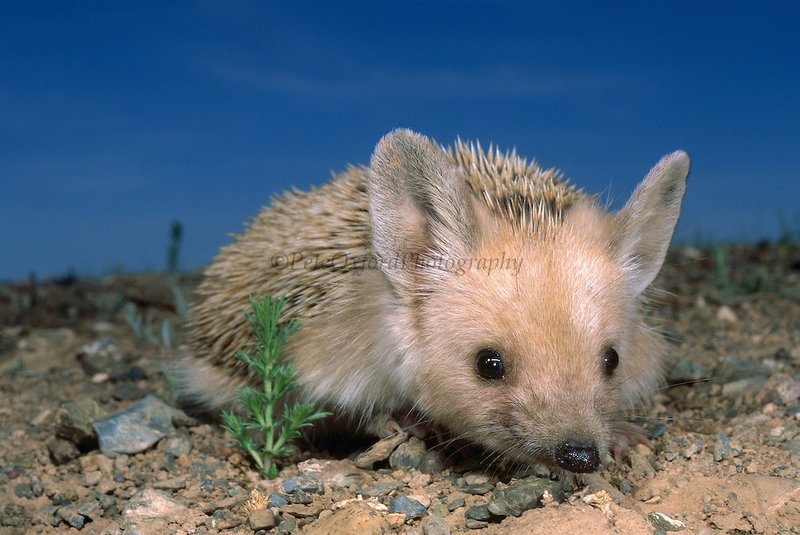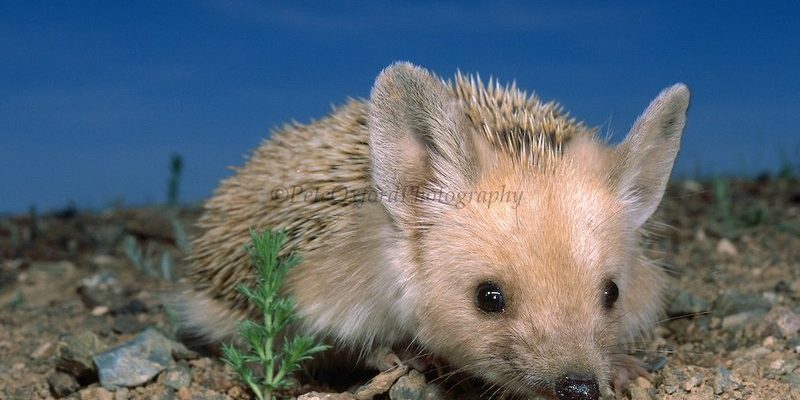
Imagine strolling through a sun-baked desert, where the heat shimmers on the horizon. Amidst this arid landscape, there’s a small yet remarkable creature that calls this harsh environment home—the Desert Hedgehog. With its spiky exterior and curious demeanor, this little mammal is both adorable and intriguing. Let’s dive into the world of the Desert Hedgehog and uncover what makes it so special.
The Desert Hedgehog is built for survival. It has adapted beautifully to the unforgiving conditions of the desert, showcasing a blend of resilience and charm. Whether you’re a nature enthusiast or just curious about wildlife, understanding the Desert Hedgehog can give you insight into the amazing adaptations of animals that thrive in extreme environments.
In this article, we’ll explore everything from their habitat and diet to their behavior and interactions with the ecosystem. So, grab your imaginary safari hat, and let’s embark on this journey to learn about the incredible Desert Hedgehog!
Physical Characteristics
The Desert Hedgehog is a small animal, typically weighing between 0.5 to 1.5 kg (1 to 3.3 lbs). Its body length ranges from 22 to 30 cm (about 8.7 to 11.8 inches), with a notable, spiky coat made of stiff, sharp quills. These quills are not only for show; they serve as a defense mechanism against predators. When threatened, the hedgehog can curl into a tight ball, presenting a formidable barrier of spikes.
Interestingly, their fur can vary in color, often appearing a blend of beige and brown, which helps them blend into the sandy landscape. This natural camouflage is vital for avoiding larger animals that may see them as a tasty treat. Their large, round eyes and small, pointed snouts are distinctive features, giving them a somewhat endearing appearance.
One fascinating aspect of their physical make-up is their strong, clawed feet. These feet are adapted for digging, allowing the Desert Hedgehog to burrow into the ground to create cozy nests for sleeping or to escape the scorching heat of the day. It’s a neat little trick for an animal that thrives in a particularly harsh environment!
Habitat and Distribution
Desert Hedgehogs primarily inhabit the sandy deserts of North Africa and parts of the Middle East. They thrive in environments where temperatures can soar during the day and plummet at night. This unique habitat requires them to be adaptable and resourceful.
Typically, they prefer areas with sparse vegetation, which gives them space to forage for food while also providing cover from predators. You might find them under bushes, rocks, or any shady spot they can squeeze into during the hot hours of the day. Interestingly, Desert Hedgehogs are nocturnal, meaning they are most active during the cool evenings and nights—perfect for exploring when the desert isn’t blistering hot.
Despite their name, not all hedgehogs found in desert areas are classified as Desert Hedgehogs. There are various species, but this particular one has adapted specifically to thrive in arid regions, showcasing the incredible diversity of wildlife that can exist in even the harshest of environments.
Diet and Feeding Habits
The diet of the Desert Hedgehog is varied, making it an opportunistic feeder. They primarily munch on insects, including beetles, ants, and crickets. You might even find them snacking on small invertebrates, fruits, and roots when the opportunity arises. This flexibility helps them survive in an environment where food options can be limited.
Hedgehogs are equipped with keen senses, particularly their sense of smell, which they rely on to locate food. They often poke around the ground with their snouts, uncovering tasty morsels hidden beneath the sand or under leaves. Their foraging behavior is quite fascinating; they can consume a significant number of insects in a single night, consuming up to 70 grams (or about 0.15 lbs) of food!
One unique aspect of their feeding habits is their ability to consume toxic creatures. Some Desert Hedgehogs have been known to eat scorpions and other potentially poisonous animals without apparent harm. This fascinating dietary choice showcases their remarkable adaptations to their environment, making them quite resilient little creatures.
Behavior and Social Structure
Desert Hedgehogs are generally solitary animals, preferring to live alone except during mating season. They are not territorial but will defend their nests from other hedgehogs and potential predators. Their social interactions are minimal, allowing them to focus on survival in their harsh habitats.
When it comes to communicating, hedgehogs use various sounds, including grunts, snorts, and hisses. These sounds can indicate distress or a warning to others. You might be surprised to learn that they also use body language, like curling up into a ball when scared or feeling threatened—it’s their way of saying, “Back off!”
Although they’re mostly nocturnal, they can sometimes be found active during twilight hours. This shift helps them avoid the extreme desert heat. While they aren’t known for long-distance travel, they tend to roam around their territory at night, looking for food and exploring their surroundings.
Reproduction and Lifespan
The breeding season for Desert Hedgehogs typically occurs in the spring and summer months. Mating often takes place during the night, and after a gestation period of about 30 to 40 days, females give birth to a litter of 2 to 4 young hedgehogs. These babies, called hoglets, are born blind and without quills, requiring attentive care from their mother.
Generally, hoglets stay with their mother for several weeks until they are strong enough to fend for themselves. This nurturing phase is crucial for their survival, as they learn vital skills during this time. Once they leave the nest, they must quickly learn to find food and avoid predators, which can be a daunting task.
Importance to Ecosystem
The Desert Hedgehog plays a vital role in its ecosystem, mostly by controlling insect populations. As it forages for food, it helps maintain a balance in the environment by keeping pest numbers in check. This natural pest control is an essential service, especially in desert regions where insects can multiply rapidly.
Moreover, Desert Hedgehogs are a food source for larger predators, including birds of prey and snakes. By occupying their place in the food web, they help sustain the ecosystem’s balance. This interdependence is an excellent reminder of how every creature, no matter how small, contributes to the health of its habitat.
You might find it interesting to know that the presence of Desert Hedgehogs can also indicate the overall health of their environment. A stable population reflects a thriving ecosystem, while declines might signal environmental issues that need attention. This has made them an important species for ecological monitoring in their native habitats.
Conservation Status and Threats
Currently, the Desert Hedgehog is classified as Least Concern by the IUCN. However, they do face some threats that could impact their populations. Habitat destruction due to urbanization, agriculture, and tourism can limit their living spaces and food sources. Additionally, climate change poses a significant risk, altering their habitats and food availability.
Another notable threat comes from domestic pets, particularly dogs, which may harm hedgehogs if they come into contact. It’s essential to be mindful of their habitats and take steps to protect them from human encroachment and pet interactions.
Conservation efforts focused on habitat preservation and public awareness can help ensure the survival of Desert Hedgehogs. Various environmental agencies and wildlife organizations are working to protect these fascinating creatures and their habitats, emphasizing the importance of maintaining biodiversity in desert ecosystems.
Interesting Facts
| Scientific Name: | Paraechinus aethiopicus |
| Size: | 22 to 30 cm (8.7 to 11.8 inches) |
| Weight: | 0.5 to 1.5 kg (1 to 3.3 lbs) |
| Lifespan: | 3 to 7 years in the wild, up to 10 years in captivity |
| Diet: | Insects, fruits, and small invertebrates |
| Habitat: | Deserts in North Africa and the Middle East |
FAQ
What do Desert Hedgehogs eat?
Desert Hedgehogs mainly feed on insects such as beetles, ants, and crickets. They are opportunistic eaters, meaning they’ll also munch on fruits and small invertebrates when available. This flexible diet helps them adapt to the changing food supply in their arid environments.
Are Desert Hedgehogs friendly pets?
While Desert Hedgehogs can be kept as pets, they are not as social as some other animals. They tend to be solitary and can be sensitive to handling. If you’re considering one as a pet, it’s essential to understand their needs and behaviors and provide a suitable habitat.
How do Desert Hedgehogs protect themselves?
The most famous defense mechanism of a Desert Hedgehog is curling into a tight ball. When threatened, their sharp quills stand erect, forming a protective barrier against predators. This ability is crucial for their survival in the wild.
Where do Desert Hedgehogs live?
Desert Hedgehogs inhabit sandy deserts primarily in North Africa and parts of the Middle East. They prefer areas with sparse vegetation, which allows them to forage for food while also providing cover from potential predators.
How fast can a Desert Hedgehog run?
Desert Hedgehogs are surprisingly quick! They can run at speeds of up to 6 km/h (about 3.7 mph) when necessary. This speed is useful for escaping predators and foraging for food. While they may not win any races, their agility helps them navigate their environment effectively.
Do Desert Hedgehogs hibernate?
No, Desert Hedgehogs do not hibernate like some other animals. However, they may become less active during extremely hot days, resting in burrows or under vegetation to escape the heat. They are mostly nocturnal, so they do their foraging at night when temperatures are cooler.
Can Desert Hedgehogs be found outside of deserts?
While their name suggests a strict preference for desert habitats, Desert Hedgehogs can sometimes be found in arid regions that are not strictly desert-like. They thrive in places that have similar temperature ranges and vegetation types, but they are not commonly found in lush or heavily forested areas.
Are Desert Hedgehogs social animals?
Desert Hedgehogs are not particularly social animals. They prefer to live alone except during mating season. Their solitary nature helps them avoid competition for resources, which is particularly important in their challenging habitats.
What threats do Desert Hedgehogs face?
Desert Hedgehogs face threats such as habitat loss due to urbanization and agriculture, climate change, and predation from domestic pets. These challenges can impact their populations and the overall health of their ecosystem.
How can I help protect Desert Hedgehogs?
You can help protect Desert Hedgehogs by supporting conservation efforts aimed at preserving their habitats. Additionally, educating others about their importance in the ecosystem can foster better understanding and appreciation of these remarkable creatures.
Are Desert Hedgehogs nocturnal?
Yes, Desert Hedgehogs are primarily nocturnal. They are most active during the cooler evening hours, allowing them to forage for food while avoiding the harsh desert sun. This behavior is essential for their survival in extreme temperatures.

